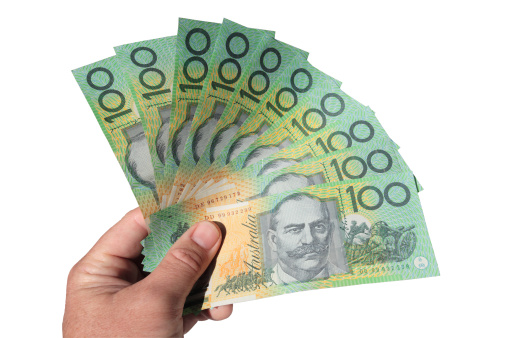Australian dollar gains ground as the rising CPI fuels hawkish attitudes toward the RBA’s monetary policy stance.
On Thursday, the Australian Dollar (AUD) edged higher for the fourth straight session. The Australian Dollar (AUD) strengthened against the US Dollar (USD). After the release of strong Australian Consumer Price Index (CPI) numbers on Wednesday.
Furthermore, lowering tensions in the Middle East have created a favorable market sentiment. Boosting risk-sensitive currencies such as the AUD and hence strengthening the AUDUSD pair.
The Australian dollar rises in response to a higher 10-year yield on Australian government bonds.
The Australian dollar increases The 10-year yield on Australian government bonds has risen beyond 4.49%. Approaching five-month highs. This increase in yield is due to increased anticipation of the Reserve Bank of Australia (RBA) taking a more hawkish position on its interest rate trajectory.
Gains in US Treasury yields could minimize the US dollar’s losses.
The US Dollar Index (DXY), which measures the US Dollar (USD) against six major currencies, falls. Presumably due to greater risk appetite. However, small improvements in US Treasury yields may minimize the Greenback’s losses.
The preliminary Gross Domestic Product Annualized (Q1) from the United States (US) is set to be revealed on Thursday, with expectations of a slowing growth rate. The GDP data will provide insights on the strength of the American economy and may
Indicate the Federal Reserve’s (Fed) future moves. If the report shows higher-than-expected results, it may fuel speculation that the Fed would postpone its rate-cutting cycle.
Daily Market Movers: Australian Dollar Appreciates Following Hotter CPI Data.
Luci Ellis, Westpac’s chief economist and former Assistant Governor (Economic) at the Reserve Bank of Australia, reports that inflation marginally exceeded forecasts in the March quarter. Westpac expects the Board to leave interest rates unchanged in May and has moved the first rate decrease from September to November this year.
In the first quarter of 2024, Australia’s Consumer Price Index (CPI) increased by 1.0% QoQ, compared to previous estimates of 0.8% and 0.6%. CPI (YoY) increased by 3.6% compared with the expected. 3.4% for the first quarter and 4.1% in the previous quarter.
Australia’s Monthly Consumer Price Index (YoY) increased to 3.5% in March, beating market expectations and the prior estimate of 3.4%.
S&P Global US Composite PMI fell in April, reflecting a slight expansion in the country’s private sector.
The S&P Global US Composite PMI fell in April, reflecting a slight expansion in the country’s private sector. This was the weakest expansion since December. Both the industrial and service sectors experienced weaker growth rates, with expansions reaching three- and five-month lows, respectively.
The Judo Bank Australia Composite Output Index increased in April 2024, representing the Australian private sector’s third consecutive month of expansion and the strongest pace since April 2022. Although the service sector predominantly drove business activity growth, the pace of loss in manufacturing output has eased to its lowest. Level in eight months.
The China Securities Journal stated on Tuesday that the People’s Bank of China (PBoC) intends to lower the Medium-term Lending Facility (MLF) rate in order to cut funding costs. The next MLF rate setting is slated on May 15. Lower interest rates may boost demand for raw materials and commodities in China, where Australia is a major exporter.









